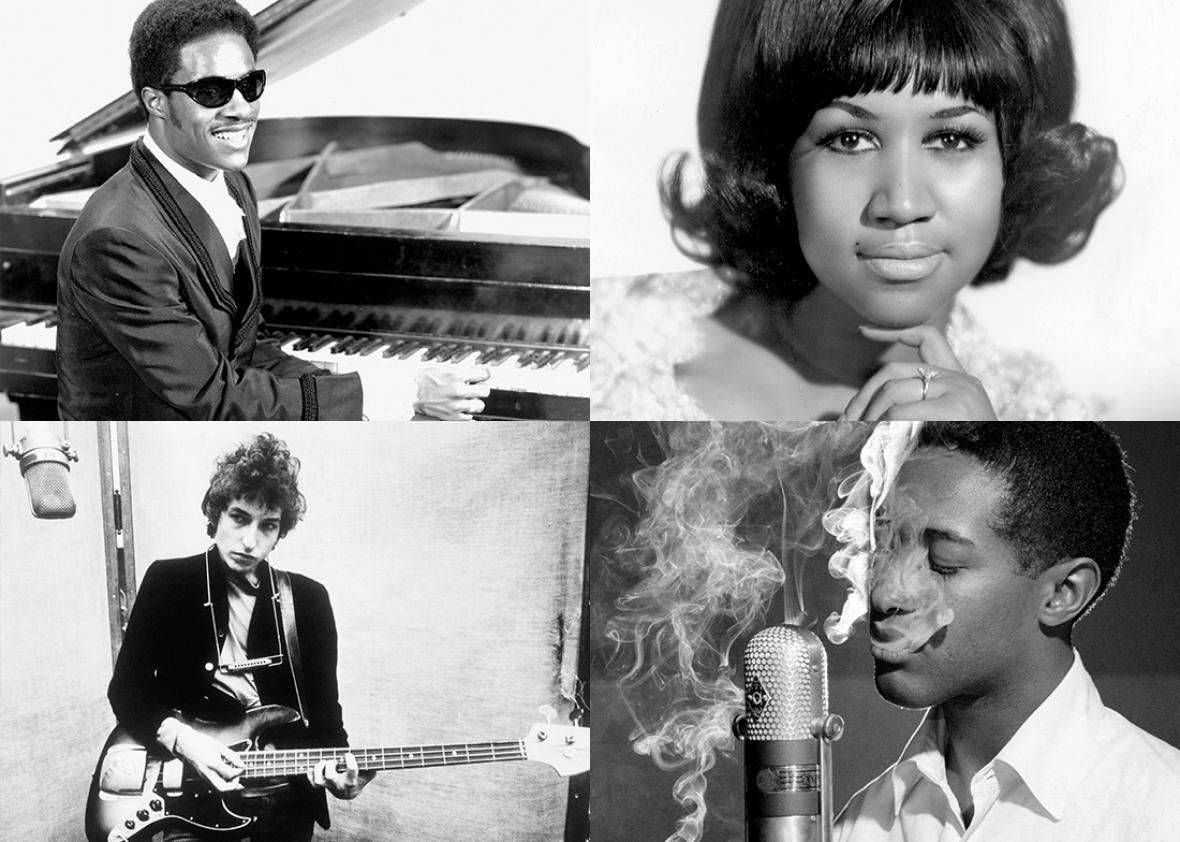When Jimi Hendrix died in September of 1970, one of his obituarists pointedly described him as “a black man in the alien world of rock.” To most readers this would have been an uncontroversial assessment: Throughout his brief and dazzling career, Hendrix’s race was a subject of curiosity and controversy, as though the sheer idea of a black man playing rock and roll lead guitar presented some sort of fundamental disjuncture to listeners. And yet few observers noted the curious fact that just 10 years earlier, no one had thought it “alien” when another black man, Chuck Berry, had been doing the exact same thing. How did rock and roll music “become white”? Did it? And what does the question even mean?
Welcome to Pop, Race, and the ’60s, a brand-new five-episode Slate Academy. I’m Jack Hamilton, and I’ll be your host. You may know me as Slate’s pop critic, and I’m also an assistant professor of American studies and media studies at the University of Virginia. I’ve just written a book called Just Around Midnight: Rock and Roll and the Racial Imagination, which sets out to answer the questions posed above and to untangle some of the extraordinary histories that lie beneath them. The decade of the 1960s was marked by unprecedented interracialism in pop music, from the revolutionary crossover success of Motown Records, to the racially mixed Southern soul of Memphis and Muscle Shoals, to the Anglicized R&B and “blue-eyed soul” of the British Invasion. And yet by the end of the decade pop had segregated itself, so much so that rock and roll had become an “alien world” to a man whose skin was the same hue as many of the music’s greatest inventors. To this day, tune into almost any “classic rock” radio station and Hendrix is the only black performer you’ll hear regularly.
I’ve spent the past 10 years exploring this topic, and I’m still not tired of it—partly because it offers a chance to explore one of the thorniest and most fascinating questions in all of music: What does it mean for sound to have a color? On the surface, referring to music or a musician as “sounding white” or “sounding black” is fundamentally nonsensical—and yet most of us effortlessly understand what these descriptions mean, even as most of us would fail if pressed to explain them. The ’60s were a decade when many of these understandings were summarily disrupted, then rebuilt in newly powerful ways.
But the other reason I keep coming back to this topic is that the music of this decade is, in my opinion, some of the most exciting, beautiful, and vital music ever made. I’ve been fortunate enough to write about a young Bob Dylan, Motown bass virtuoso James Jamerson, Dusty Springfield’s “Son of a Preacher Man,” and Stevie Wonder’s otherworldly cover of the Beatles’ “We Can Work It Out,” all in the pages of the same book. And now I get to talk about all of it on a podcast!
In the interest of full disclosure, I wasn’t alive in the ’60s—I barely managed to sneak into the ’70s. But I’ve been in love with music for about as long as I can remember; I started taking piano lessons when I was 6 (thanks, Mom), spent my late teens and early 20s playing in a band professionally (sorry, Mom), and since then have spent most of my adult life listening to and writing about music, academically and otherwise. And through it all I’ve spent an unreasonable amount of time talking about music, with friends, strangers, colleagues, students, even (especially) with other Slate writers. This Slate Academy is a chance to continue this conversation, one that’s happily consumed the vast majority of my life, and broaden it to include all of you. Our podcast series will feature some of America’s leading critics and historians of popular music, who’ll join me on a journey through some of the greatest musical moments of the ’60s. Many of the songs and artists we’ll be discussing are immensely famous, and you may already know and love them; this podcast will help you hear them with new ears. Hopefully it will also introduce you to some music you’ve never heard before, that you’ll come to love just as much. We hope you’ll join us! To borrow from one of the greatest and most complicated bands of the ’60s, it’ll be a gas, gas, gas.
